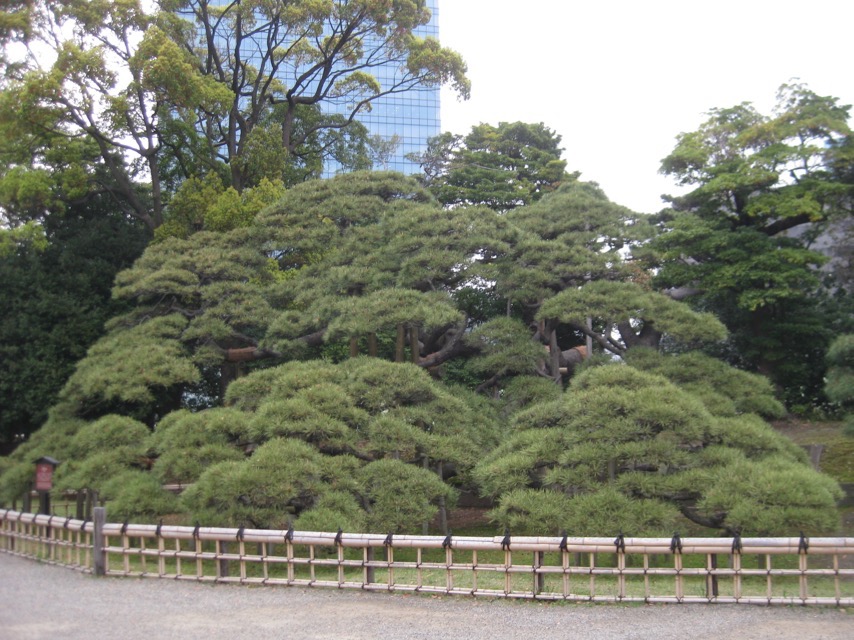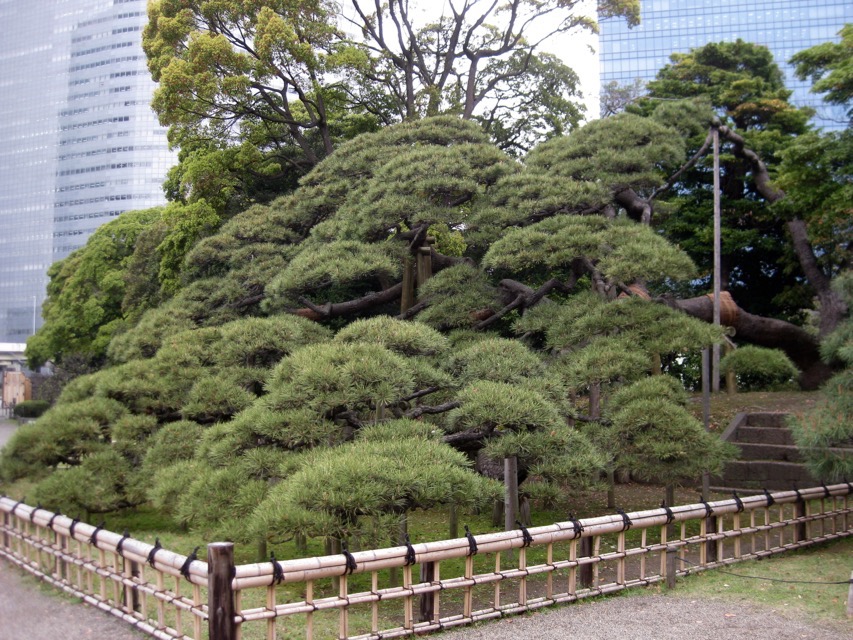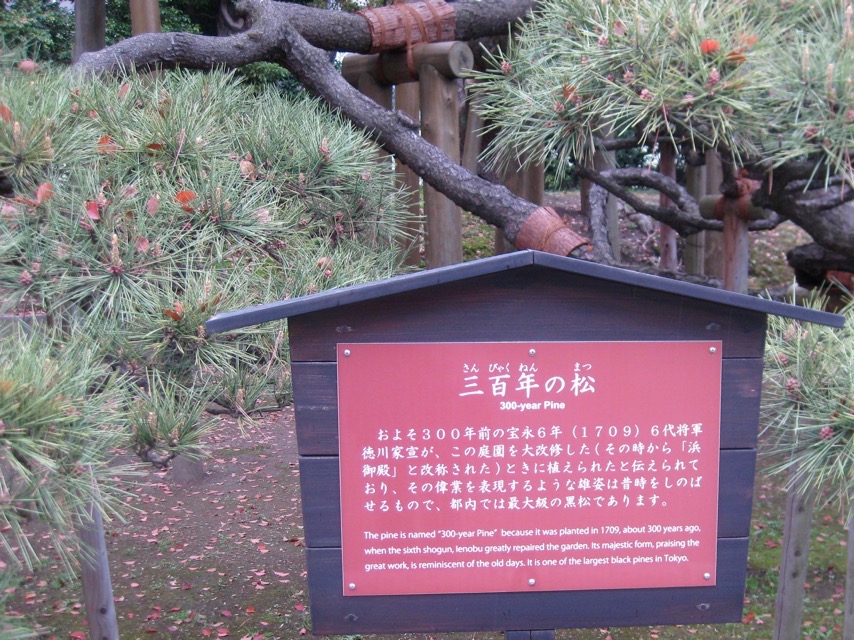The Black Pine (Pinus thunbergii Parl.) was planted in 1709 to commemorate the renovations made to the garden by the 6th shogun Ienobu.

The Pine in its enclosure, from the front.

Many of the branches are supported on posts as can be seen from the side view. The main trunk is also visible here.

The sign for the Pine and also a closer view of a wrapped branch and its wooden support.
From: Ernest Henry Wilson. “The Conifers and Taxads of Japan.”
"...the Black Pine was discovered by Thunberg and introduced into Holland by von Siebold in 1855 and into England by John Gould Veitch in 1861."
"...Black Pine, or Kuro-matsu, is found in Japan from southernmost Kyushu to the northern limits of Hondo, but it has been so much planted from the earliest days of Japanese history that it is impossible to-day to determine its original geographical range. It grows wild on the islands of Tanega-shima and Yaku-shima; on the first it forms very extensive forests and on the latter it occurs scattered through the coastal savannah and also in pure stands of small size."
"It is a maritime species and very probably at one time was widely distributed along the coastal regions of Japan. “
"As usually seen this Black Pine is a most picturesque tree with a crooked trunk, ponderous, sprawling branches, dark green leaves, and a blackish-looking crown of no particular shape. Its odd habit, umbrageous withal, is probably what has so endeared it to the Japanese, by whom it has been more widely planted than any other tree except the Cryptomeria. It is certain that this Pine has influenced Japanese art more than any other tree as it is a familiar subject on their paintings, wood-carvings and embroideries. The great highways of Old Japan, like the Tokaido, which stretched from Kyoto to Tokyo, and the Oshū-kaidõ, from Tokyo to Aomori, were lined with rows of this Pine, the remains of which may be seen to-day. In the grounds of the Daimyõs' palaces this tree was much planted and in those of Nagoya castle some fine trees are still growing. In Tokyo there is a picturesque group of this Pine outside the temples in Shiba Park, and in the grounds and on the inner wall of the moat which bounds the Emperor's palace there are many fine specimens. In many places in Japan are famous trees of this Pine which the people make long pilgrimages to see, one might say to worship. Such, for example, are the extraordinary tree at Karasaki on the shore of Lake Biwa, a description and picture of which appeared in the Gardeners' Chronicle, ser. 3, XV. 366, fig. 44 (1894), and the Ship Pine in front of the Kofukuji Temple at Nara. This latter is about 28 m. tall, 6 m. in girth of trunk and the lower branches, which form the prow and deck of the boat, are 50 m. long.”
"Under long cultivation in Japanese gardens several distinct forms have developed, some dwarf, some pendulous in habit, others with variegated or otherwise abnormal foliage. Another name for this Pine in Japan is O-Matsu (Male Pine)."